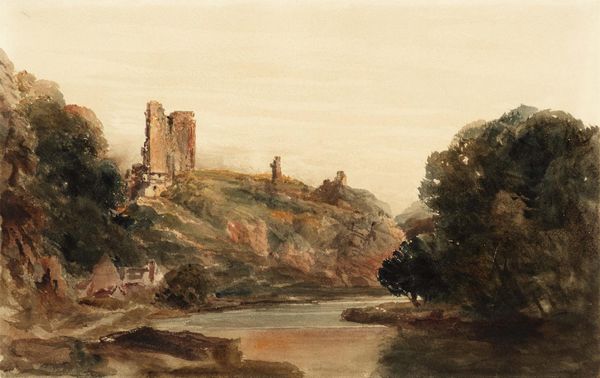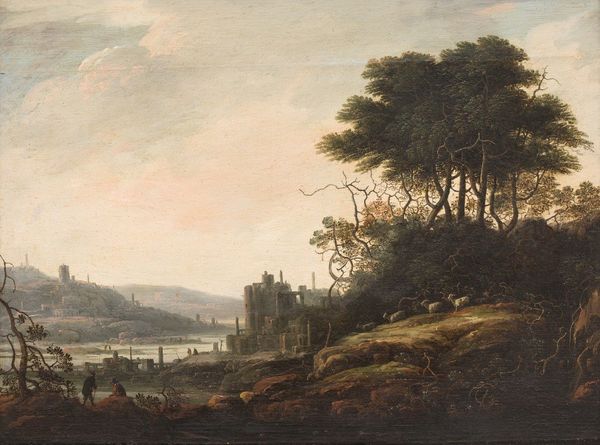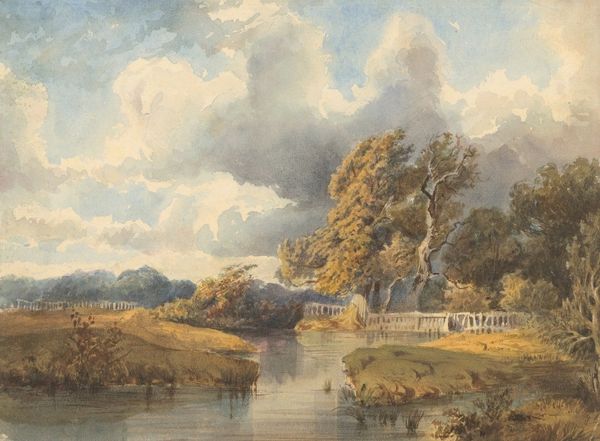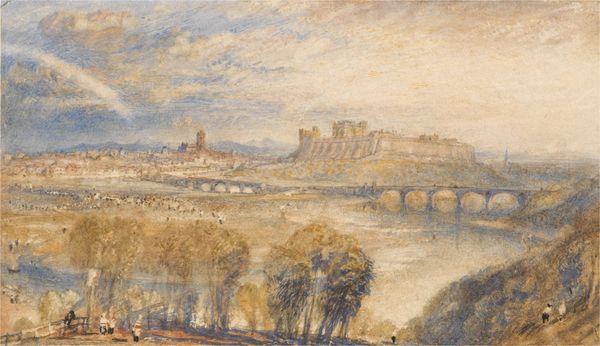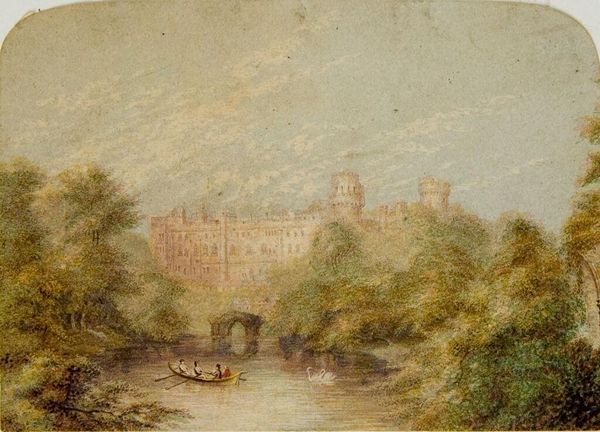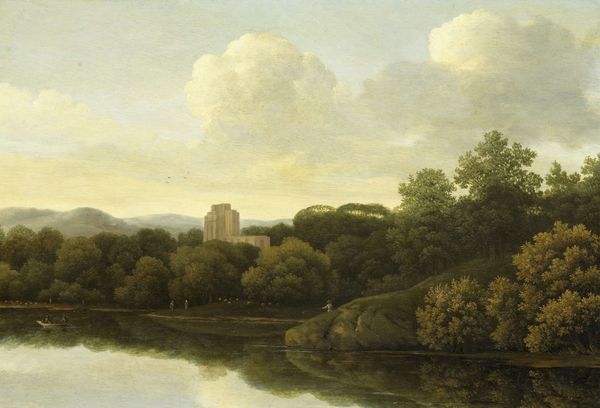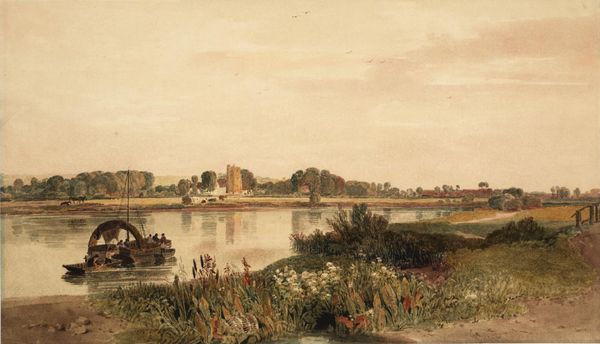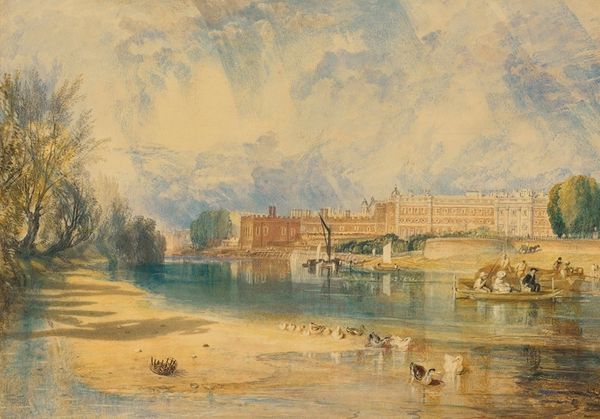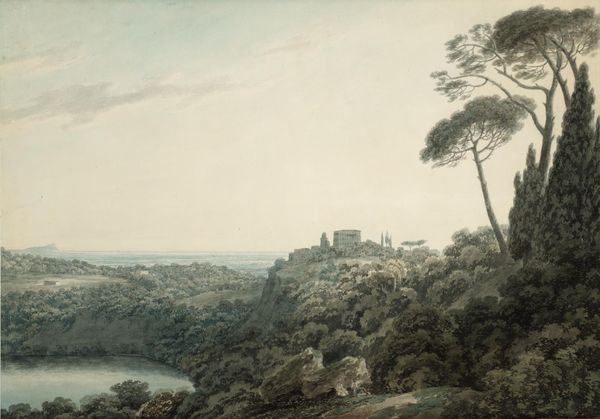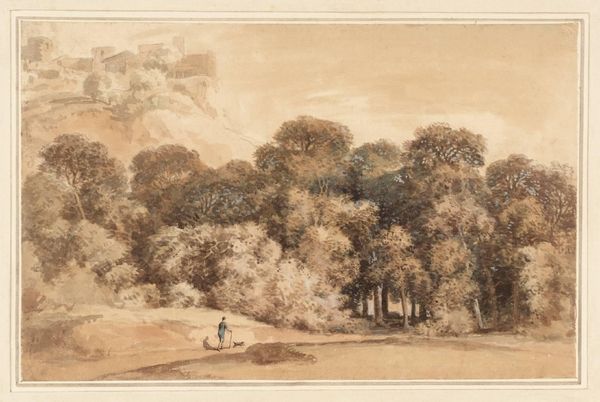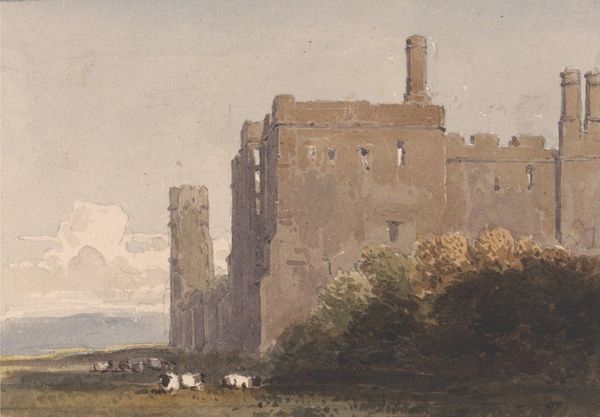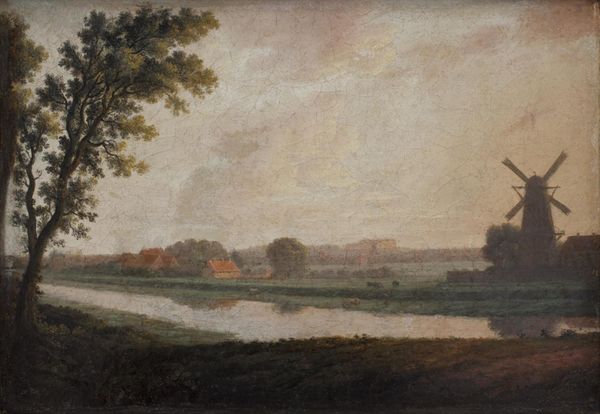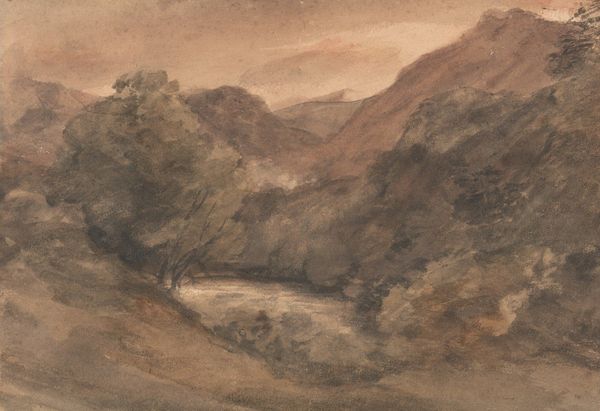
painting, fresco, watercolor
#
painting
#
landscape
#
charcoal drawing
#
fresco
#
oil painting
#
watercolor
#
romanticism
#
mixed medium
#
watercolor
Dimensions: height 290 mm, width 455 mm
Copyright: Rijks Museum: Open Domain
Editor: Here we have Peter De Wint's watercolor, *Evening Landscape with the Ruins of Kirkstall Abbey, Yorkshire*, dated sometime between 1794 and 1849. It feels…melancholy, almost dreamlike, with that crumbling abbey in the distance. What draws your eye when you look at this piece? Curator: What immediately strikes me is how De Wint situates Kirkstall Abbey. Ruins in landscape painting, especially during the Romantic period, are never *just* ruins. They become symbols of the passage of time, of lost power, even of resistance against encroaching industrialization. How does that reading of the ruined abbey sit with you? Editor: That’s interesting. I hadn’t really considered the resistance angle, but given the time period, that makes sense. It's more than just a picturesque ruin, then? Curator: Exactly. Think about the historical context: the Dissolution of the Monasteries under Henry VIII, the shift from agrarian society to an industrial one. Ruins become visual metaphors for these radical societal changes. De Wint isn’t simply depicting a landscape; he’s inviting us to contemplate the forces that shape our world. Do you think he succeeds in this? Editor: I think the atmospheric quality helps. It's not a stark depiction. There's a softness that suggests reflection, not necessarily anger. So, it is thought-provoking and not directly accusatory. Curator: The choice of watercolor also plays a crucial role. The medium itself lends a certain ephemerality to the scene, suggesting fragility and impermanence. How does this compare with land usage and the rise of modernity in society at the time? Editor: Okay, that really ties it together for me. It’s like the very medium embodies the themes of loss and change, mirroring the decaying abbey itself. Curator: Precisely. De Wint uses the landscape as a stage to explore broader themes of power, identity, and societal transformation. A testament to the lasting power of art as a mirror reflecting not only the visible world but also the intricate layers of history and social struggle embedded within it. Editor: Thanks, I’ll never look at a ruin the same way again!
Comments
No comments
Be the first to comment and join the conversation on the ultimate creative platform.
